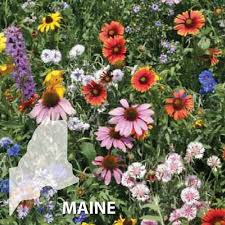
The Beauty and Benefits of Native Wildflower Seeds
Native wildflower seeds are not just a beautiful addition to any garden; they also offer numerous benefits for the environment and local wildlife. These seeds come from plants that are indigenous to a specific region, making them well-suited to the local climate and soil conditions.
One of the key advantages of planting native wildflower seeds is their low maintenance requirements. These plants have adapted to thrive in their natural habitat, reducing the need for excessive watering, fertilizers, and pesticides. This makes them an eco-friendly choice for sustainable gardening practices.
Furthermore, native wildflowers play a crucial role in supporting pollinators such as bees, butterflies, and hummingbirds. By providing these essential insects and birds with a source of nectar and pollen, native wildflower gardens help maintain biodiversity and promote ecosystem health.
In addition to their environmental benefits, native wildflowers add color and diversity to landscapes, creating vibrant displays throughout the seasons. Whether you’re looking to attract wildlife, enhance your garden’s aesthetics, or simply enjoy the beauty of nature, planting native wildflower seeds is a rewarding experience.
Consider incorporating native wildflowers into your garden design to support local ecosystems, reduce maintenance efforts, and enjoy the natural beauty that these plants have to offer.
5 Essential Tips for Successfully Planting Native Wildflower Seeds
- Choose native wildflower seeds that are appropriate for your region’s climate and soil conditions.
- Prepare the planting area by removing weeds and loosening the soil to ensure good seed-to-soil contact.
- Sow the seeds at the recommended depth and spacing for optimal growth and blooming.
- Water the seeded area regularly, especially during dry periods, to help the seeds germinate and establish strong roots.
- Monitor for pests or diseases that may affect the wildflowers and take appropriate action if needed.
Choose native wildflower seeds that are appropriate for your region’s climate and soil conditions.
Selecting native wildflower seeds that are well-suited to your region’s climate and soil conditions is crucial for successful gardening. By choosing seeds that are adapted to the local environment, you can ensure that the plants will thrive with minimal maintenance. Native wildflowers that are compatible with your region’s specific conditions are more likely to establish strong root systems, resist pests and diseases, and bloom abundantly, creating a beautiful and sustainable garden that benefits both your landscape and local wildlife.
Prepare the planting area by removing weeds and loosening the soil to ensure good seed-to-soil contact.
To maximize the success of planting native wildflower seeds, it is essential to prepare the planting area diligently. Start by clearing the area of weeds and debris to create a clean and fertile environment for the seeds to thrive. Loosening the soil using a garden fork or hoe will help improve drainage and allow for better seed-to-soil contact, ensuring that the seeds have optimal conditions for germination and growth. By taking the time to properly prepare the planting area, you can set the stage for a flourishing display of native wildflowers in your garden.
Sow the seeds at the recommended depth and spacing for optimal growth and blooming.
To ensure optimal growth and blooming of native wildflower seeds, it is crucial to sow them at the recommended depth and spacing. Properly following these guidelines allows the seeds to establish strong root systems and receive adequate sunlight, water, and nutrients for healthy development. By planting at the correct depth and spacing, you can promote robust growth, vibrant blooms, and a flourishing habitat for pollinators and wildlife.
Water the seeded area regularly, especially during dry periods, to help the seeds germinate and establish strong roots.
To ensure successful growth of native wildflower seeds, it is essential to water the seeded area regularly, particularly during dry periods. Adequate watering helps the seeds germinate and establish strong roots, enabling the plants to thrive in their natural habitat. By providing consistent moisture to the seeded area, you can support healthy growth and development of native wildflowers, ultimately enhancing the beauty and biodiversity of your garden or landscape.
Monitor for pests or diseases that may affect the wildflowers and take appropriate action if needed.
It is essential to monitor native wildflower seeds for pests or diseases that may impact their growth and health. By regularly inspecting the plants for any signs of infestation or disease, gardeners can take timely and appropriate action to protect their wildflowers. This proactive approach helps maintain the beauty and vitality of the garden while ensuring the well-being of the native plant species.
